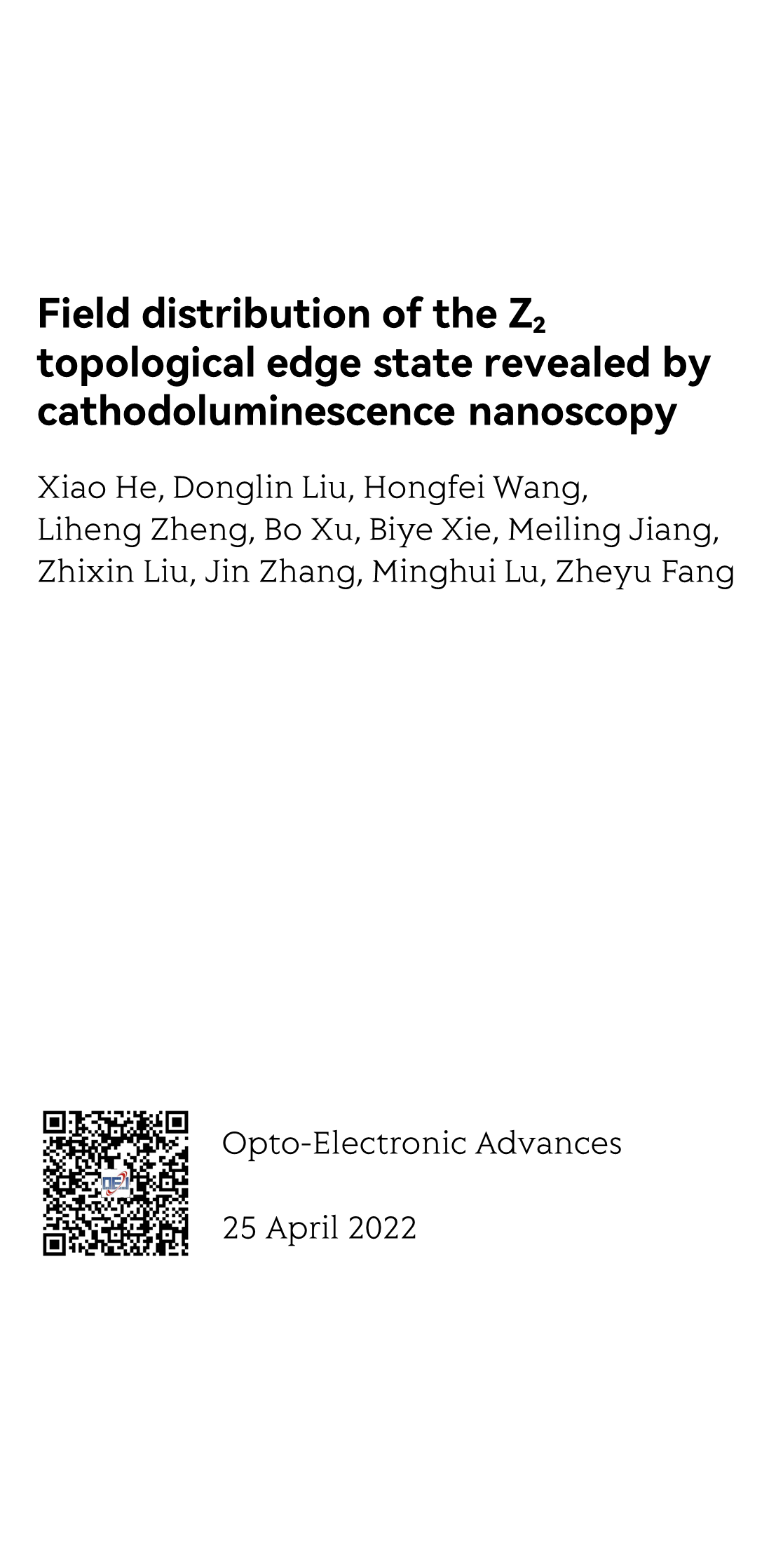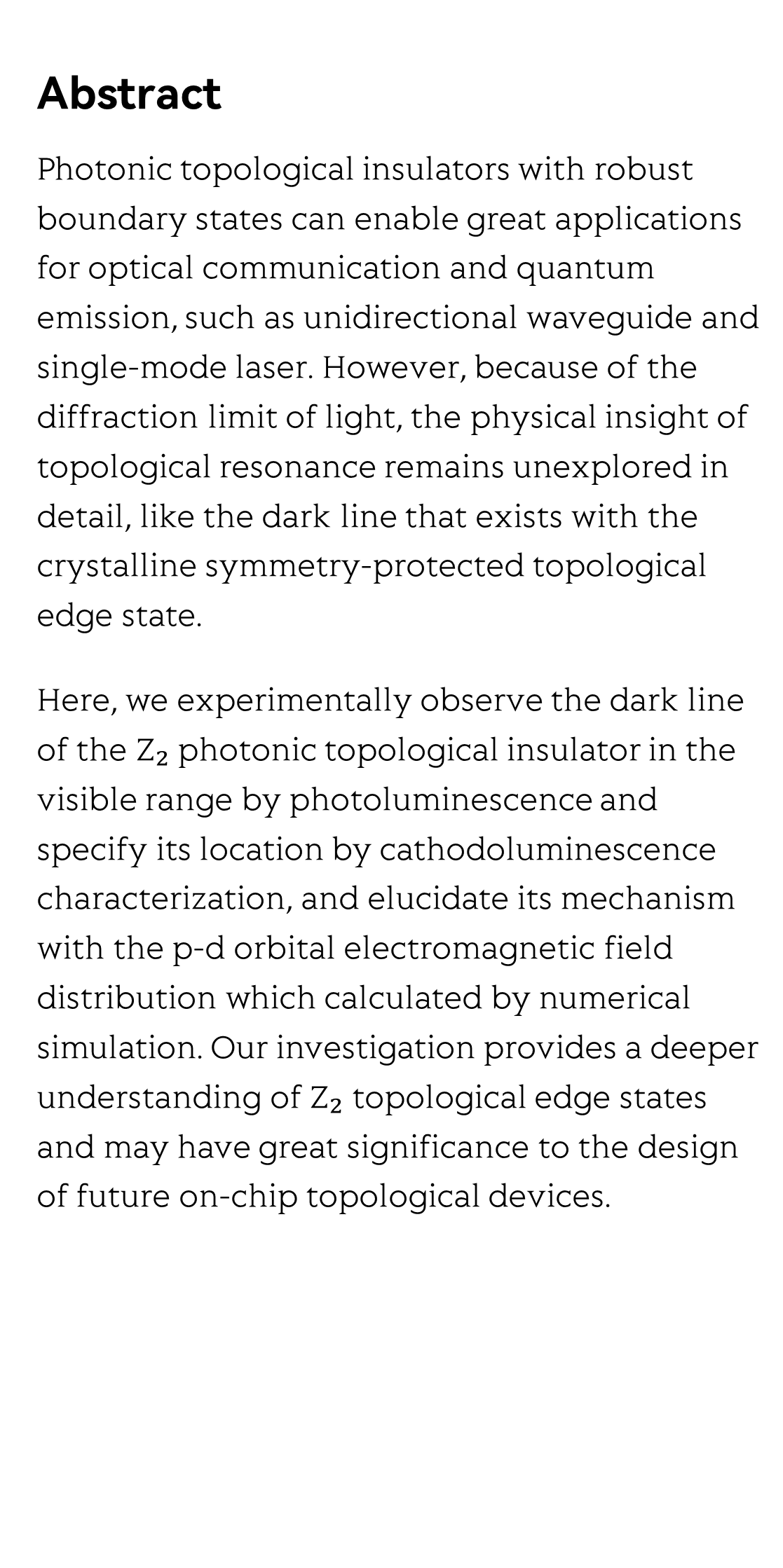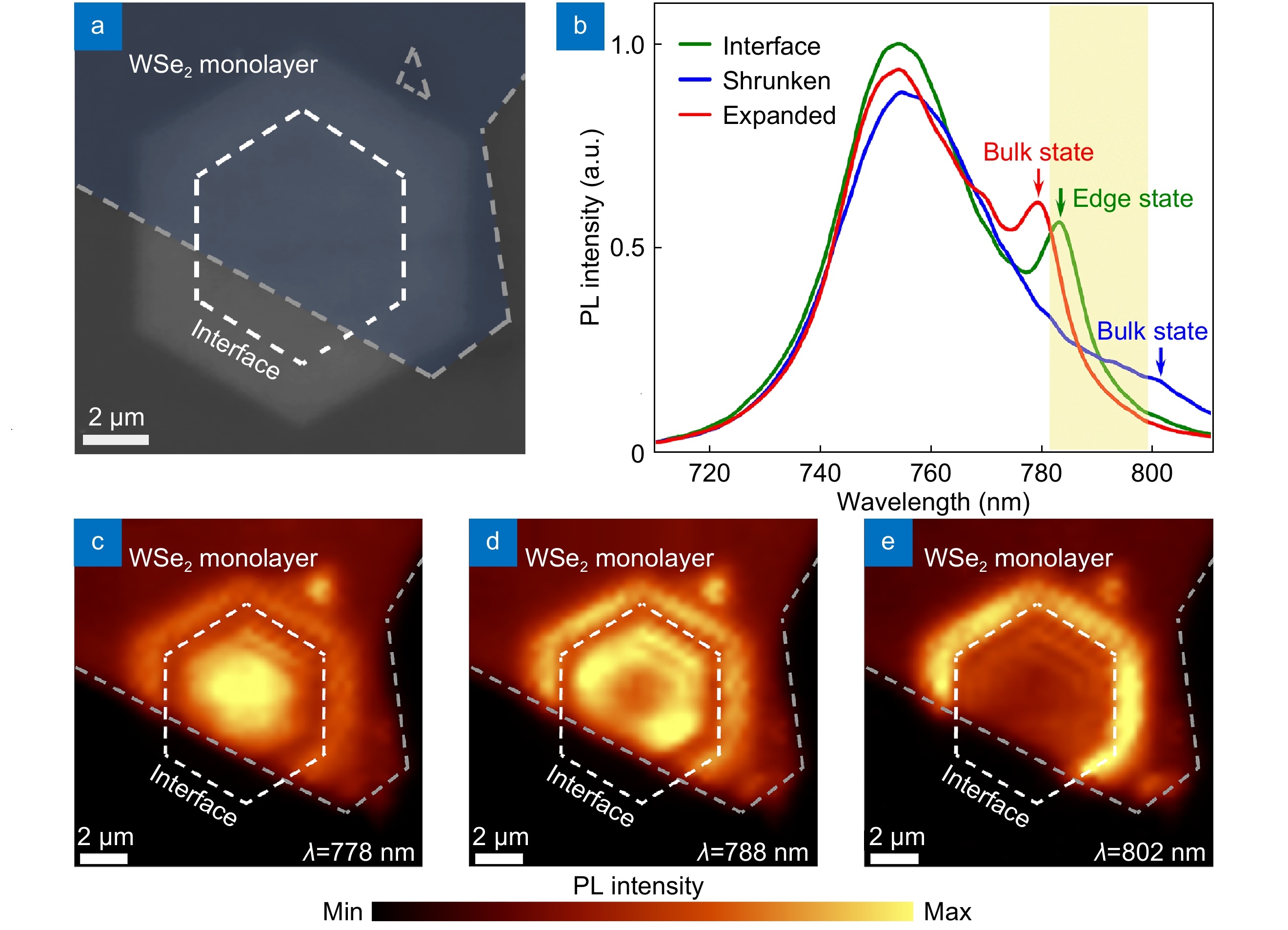(Peer-Reviewed) Field distribution of the Z₂ topological edge state revealed by cathodoluminescence nanoscopy
Xiao He 何霄 ¹, Donglin Liu 刘冬林 ¹, Hongfei Wang 王洪飞 ², Liheng Zheng 郑立恒 ¹, Bo Xu 徐波 ³, Biye Xie 解碧野 ² ⁴, Meiling Jiang 姜美玲 ¹, Zhixin Liu 刘志鑫 ¹, Jin Zhang 张锦 ³, Minghui Lu 卢明辉 ², Zheyu Fang 方哲宇 ¹
¹ School of Physics, State Key Lab for Mesoscopic Physics, Academy for Advanced Interdisciplinary Studies, Collaborative Innovation Center of Quantum Matter, and Nano-optoelectronics Frontier Center of Ministry of Education, Peking University Yangtze Delta Institute of Optoelectronics, Peking University, Beijing 100871, China
中国 北京 北京大学物理学院 人工微结构和介观物理国家重点实验室 前沿交叉学科研究院 量子物质科学协同创新中心 纳光电子前沿科学中心 北京大学长三角光电科学研究院
² National Laboratory of Solid State Microstructures, Department of Materials Science and Engineering, Nanjing University, Nanjing 210093, China
中国 南京 南京大学材料科学与工程系 固体微结构物理国家重点实验室
³ College of Chemistry and Molecular Engineering, Peking University, Beijing 100871, China
中国 北京 北京大学化学与分子工程学院
⁴ Department of Physics and HKU-UCAS Joint Institute for Theoretical and Computational Physics at Hong Kong, the University of Hong Kong, Pokfulam Road, Hong Kong, China
香港大学物理系 香港大学-UCAS理论与计算物理联合研究所
Opto-Electronic Advances, 2022-04-25
Abstract
Photonic topological insulators with robust boundary states can enable great applications for optical communication and quantum emission, such as unidirectional waveguide and single-mode laser. However, because of the diffraction limit of light, the physical insight of topological resonance remains unexplored in detail, like the dark line that exists with the crystalline symmetry-protected topological edge state.
Here, we experimentally observe the dark line of the Z₂ photonic topological insulator in the visible range by photoluminescence and specify its location by cathodoluminescence characterization, and elucidate its mechanism with the p-d orbital electromagnetic field distribution which calculated by numerical simulation. Our investigation provides a deeper understanding of Z₂ topological edge states and may have great significance to the design of future on-chip topological devices.
Meta-lens digital image correlation
Zhou Zhao, Xiaoyuan Liu, Yu Ji, Yukun Zhang, Yong Chen, Zhendong Luo, Yuzhou Song, Zihan Geng, Takuo Tanaka, Fei Qi, Shengxian Shi, Mu Ku Chen
Opto-Electronic Advances
2025-07-29
Broadband ultrasound generator over fiber-optic tip for in vivo emotional stress modulation
Jiapu Li, Xinghua Liu, Zhuohua Xiao, Shengjiang Yang, Zhanfei Li, Xin Gui, Meng Shen, He Jiang, Xuelei Fu, Yiming Wang, Song Gong, Tuan Guo, Zhengying Li
Opto-Electronic Science
2025-07-25





